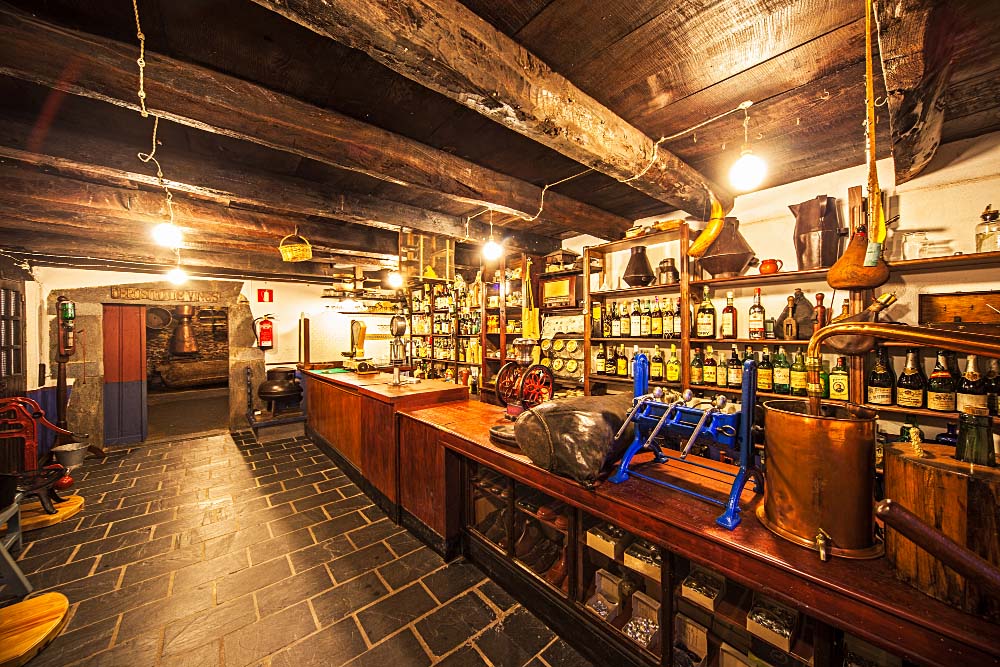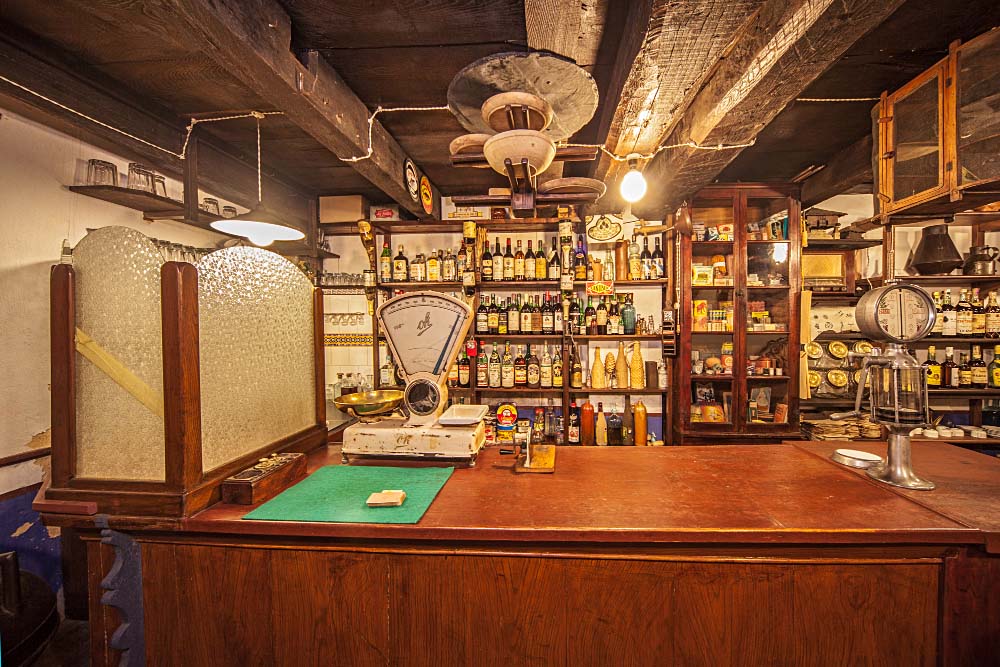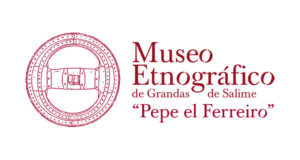In the more important villages, the parish headwaters and in the inns or houses located on the edge of the royal roads, taverns were set up offering the public drinks, pork foods and products that were not manufactured in the houses, such as preserves, biscuits and sweets, writing and smoking paper, candles and lanterns for lighting, matches and, in some cases, tobacco. Hospitality was the norm in the canteens and it was not uncommon for the passing stranger to share their own food cooked for the house.
- The Museum
- 01.- The Cabanón
- 02.- The Rectory House
- 02.01.-The entry corridor
- 02.02.- A Lareira / Kitchen
- 02.03.- Textile industry room
- 02.04.- Hall or room
- 02.05.- Gallery
- 02.06.- Small room
- 02.07.- Collection of xugos/yokes
- 02.08.- Zapateiro/shoemaker workshop
- 02.09.- Wine cellar
- 02.10.- Canteen
- 02.11.- Wood hall
- 02.12.-The forxa/forge
- 02.13.-Lathe Room
- 03.- Corridor
- 04.- Model of the mill
- 05.- Abeirugo / shed
- 06.- Granary
- 07.- Bakery
- 08.- Well
- 09.- Meda
- 10.- Flour Mill
- 11.- Eira/threshing floor
- 12.- Miller’s House
- 13.- Fulling mill model
- 14.- Cortín
- 15.- A casoa / The Mansion
- 16.- Soft drinks factory
- 17.- Cabazo
- 18.- Farming implements
- 19.- Chapel
- Buy tickets



